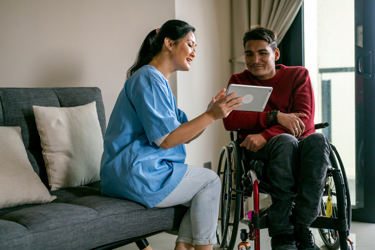Recognizing Patients' Wants And Needs Benefits Sponsors, Regulators, And, Of Course, Patients
By Richie Kahn and Jenn McNary, cofounders, Canary Advisors

If you work in clinical research long enough, certain data points are slowly carved into your frontal lobe. Like the fact that 86% of clinical trials fail to meet timelines1 and that patient recruitment is the most common cause of delay. This delay can be attributed to a fundamental mismatch between patients’ wants and needs and clinical development programs that fail to take these critical requirements into consideration.
PFDDs Meetings And Other Methods For Getting Patient Input
With this background in mind, CDER developed the patient-focused drug development (PFDD) framework2 in 2012. PFDD is a method by which drug and device developers, regulatory authorities, payers, and providers can learn about the unmet needs, quality of life impacts, and preferences of patients living with a particular condition.
Since that time, FDA has run roughly 30 PFDD meetings in an attempt to better align patient needs and study protocols. Starting in 2017, PFDD meetings have been externally led (EL), that is, by patient advocacy organizations and the communities they serve.
More recently, Section 3002 of the 21st Century Cures Act3 provided detailed guidance for PFDD, and FDA remains set on ensuring that sponsors incorporate the patient perspective into their clinical development plans. This commitment comes with teeth as regulators now consider patient experience data and patient-focused drug development outputs like voice of the patient reports4 as part of their regulatory review.
But externally led PFDDs aren’t the only method for learning more about patients’ wants and needs. In many instances, a full-blown PFDD may not even be right for a patient community. Fortunately, the FDA provides other options such as listening sessions, which the FDA requests with patients when it has specific questions it would like to ask. On the other hand, patient-led listening sessions can also be requested when communities want to share their thoughts with the agency.5 Other opportunities for patient input exist, such as involvement in the Patient Engagement Collaborative (PEC), participation in the FDA’s Patient Representative Programs, membership in the Patient Engagement Advisory Committee (PEAC), and involvement with the Patient & Caregiver Connection.6
Of course, the sponsor will always have regularly scheduled Type A, B, and C meetings with the FDA. In each of those, there are opportunities to incorporate the patient journey and experience, depending on the discussions being had. However, the FDA cannot invite patients or patient advocacy organizations (PAOs) to attend these closed-door sponsor meetings, but they are incredibly supportive of sponsors bringing patients to add context around a disease state.7 Patients can add value by providing their insights around risk-benefit, biomarker discussions, trial design discussions, and feasibility conversations, among other things. The agency derives a better understanding of a disease state and the PAOs they can go to with any questions. Patients can either kick off the meeting by sharing a personal story or get more involved in the meetings as active participants once a formal agreement has been put in place between the sponsor company and the patient.
How More Patient Experience Data Makes More Successful Trials
What’s in it for sponsors: Sponsors are always curious about the potential return on investment when incorporating the patient perspective into their work. During the 2021 Patients as Partners meeting, Ken Getz, director of and professor at the Tufts Center for the Study of Drug Development Tufts University School of Medicine, presented the first quantitative results demonstrating the impact of patient advisory boards (PABs).9 To get there, his team compared Phase 3 protocols in which PABs were utilized with Phase 3 protocols in which they were not. Some of the key findings? When protocols included PABs, the total number of endpoints slimmed down, less extraneous data was collected, and the rate of protocol amendments plummeted. For example, Phase 3 programs that utilized patient advisory boards saw 30% fewer protocol amendments.
What’s in it for regulators: The outputs of EL-PFDD meetings are designed to be actionable, and the FDA is committed to ensuring sponsors incorporate their learnings into their clinical development programs. Patient experience data collected through EL-PFDDs and other mechanisms are reviewed as part of regulatory submissions, and Section 3004 of the 21st Century Cures Act8 directs the FDA to report on the use of patient experience data in regulatory decision-making.
When weighing regulatory submissions, the FDA has a lot to consider: quantitative data, primary outcomes, biomarkers, and statistical power. The agency also wants to know that, if a PFDD meeting has occurred, this information has been incorporated into the study design.
Imagine a scenario where a promising compound has been discovered, several potential indications are identified, and a PFDD is held to learn more about a particular indication of interest. The FDA would wonder: Have patients articulated that a particular form of drug administration is preferred or outright unacceptable? Alternatively, in an indication with multiple standard of care options on the market and substantial patients’ dissatisfaction, has this information been incorporated into the clinical development program? Or is the IP more of the same?
What’s in it for patients: By removing nice-to-haves and focusing on must-haves, clinical trial protocols have become less burdensome to patients. Patients, then, are less likely to feel overwhelmed by the thought of study participation, which makes the informed consent process a whole lot easier. While this is just one element that ultimately impacts retention, it isn’t one to be overlooked.
By incorporating patient preferences, unmet needs, and quality of life impacts into clinical trial design, sponsors can create protocols that are better suited for the realities faced by the patient populations they’re most interested in. For example, a PFDD might reflect that patients with bronchiolitis obliterans syndrome are most accepting of an oral therapy that leads to improved FEV1 or, at the very least, stability in lung function.10 Similarly, patients may indicate that they are willing to participate in clinical trials so long as they don’t need to forgo standard of care. These sessions can help to better contextualize how patients feel and function and lead to the design of more agreeable treatment arms.
Connecting Early And Authentically With Patients
When sponsors show patient communities that they’re truly invested in establishing a mutually beneficial relationship, they generate trust, build rapport, and can develop healthy collaborations with patients as well as PAOs. Such a patient-centric approach can ensure patient-driven outcomes, identify access and reimbursement issues before they arise, increase regulatory awareness, and drive participation in clinical trials.
The recipe for a successful sponsor/PAO relationship isn’t a secret. Each PAO and patient community is different, so a good place to start is by mapping the players, engaging thoughtfully, and listening. Sponsors must convey that they’re in it for the long haul and with the patient community front of mind. Sponsors should also engage respectfully with the community at indication-focused events and conferences, developing an understanding of the community’s wants and needs and building authentic relationships. That way, when a trial is ready to recruit, the community already knows the sponsor and respects its work.
It should be said, however, that these engagements are two-way streets. Sponsors should expect to hear from PAOs and advocates when they’re not on the same page and should have a plan for how to respond in an authentic (but regulatorily compliant) manner.
By better aligning patient desires with clinical development programs, sponsors can craft smarter protocols and mitigate unnecessary costs and delays, thereby reducing the time it takes to bring promising therapies to the patients that need them most.
References:
1. D.L. Anderson, A Guide to Patient Recruitment Today's Best Practices and Proven Strategies (CenterWatch Inc., Boston, MA, 2001).
3. https://www.congress.gov/114/bills/hr34/BILLS-114hr34enr.xml
4. https://www.fshdsociety.org/fsh-events/vopf/
5. https://www.fda.gov/patients/learn-about-fda-patient-engagement/fda-patient-listening-sessions
6. https://www.fda.gov/patients/learn-about-fda-patient-engagement/fda-patient-engagement-opportunities
7. https://www.fda.gov/media/139088/download
8. https://www.congress.gov/114/bills/hr34/BILLS-114hr34enr.xml
9. Getz, Ken (2021). Taking Patient Centricity to the Next Level in Guiding Protocol Design [PowerPoint slides]. Patients as Partners 2021
10. https://lungtransplantfoundation.org/bos-voice-of-the-patient/
About The Authors:
 Richie Kahn is a public health professional by training, clinical researcher by trade, and patient advocate by necessity. He is cofounder and principal at Canary Advisors, a patient engagement firm that partners with organizations firmly committed to patient-focused drug development.
Richie Kahn is a public health professional by training, clinical researcher by trade, and patient advocate by necessity. He is cofounder and principal at Canary Advisors, a patient engagement firm that partners with organizations firmly committed to patient-focused drug development.
 Jenn McNary is an educator and advocate with 18 years’ experience on the front lines of rare disease clinical development; drug approval and reimbursement; and advocacy. She’s cofounder of One Rare, a nonprofit that serves young adults 18-35 impacted by rare disease, as well as cofounder and principal at Canary Advisors.
Jenn McNary is an educator and advocate with 18 years’ experience on the front lines of rare disease clinical development; drug approval and reimbursement; and advocacy. She’s cofounder of One Rare, a nonprofit that serves young adults 18-35 impacted by rare disease, as well as cofounder and principal at Canary Advisors.
